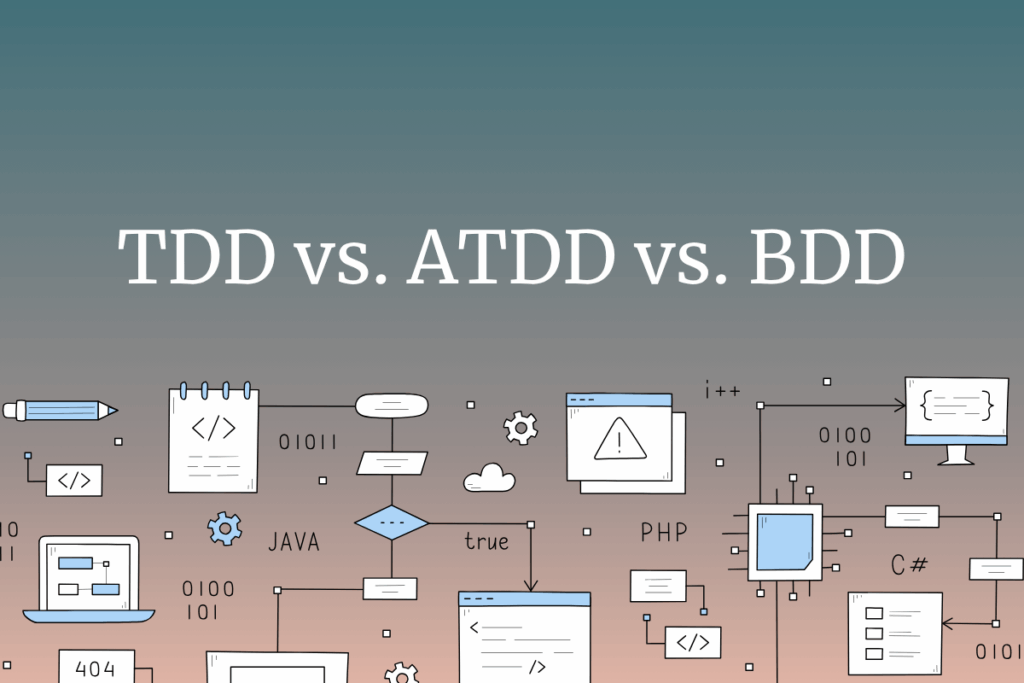Imagine a critical bug is discovered in the checkout process just hours before your biggest sale campaign of the year. The stress and cost of fixing this bug on time are enormous. This has led to a fundamental shift in how quality assurance (QA) is approached in retail technology teams, with shift-left testing and automation emerging as critical strategies for success.
The Critical Need for Speed and Quality in Retail
The retail industry is experiencing unprecedented digital transformation, with global eCommerce projected to hit $6.86 trillion in 2025, representing a year-over-year growth of 8.3%. 48.8% of customers now start shopping on general retailer websites or apps like Walmart or Amazon, with 86% making their most frequent online purchases through these platforms. This shift means that any technical glitch, performance issue, or user experience flaw can directly translate to lost revenue and damaged brand reputation.
Traditional QA approaches, where testing occurs at the end of the development cycle, are no longer sufficient. The “test later, fix later” mentality creates bottlenecks that slow down release cycles and increase the cost of fixing defects. In retail, where seasonal campaigns, flash sales, and real-time inventory updates are commonplace, the ability to deploy quickly and reliably can make the difference between market leadership and obsolescence.
Understanding Shift-Left Testing in the Retail Context
Shift-left testing is a methodology that moves quality assurance activities earlier in the software development lifecycle. Rather than treating testing as a final gate before deployment, it integrates QA processes throughout the development cycle, starting from the planning and design phases.
Survey data highlights a remarkable shift, with 51.8% of teams adopting DevOps practices by 2024, up from just 16.9% in 2022. This growth underscores the increasing recognition of shift-left principles in modern software development.
Shift-left testing encourages integrating automated tests earlier in the development lifecycle, ideally as close to code creation as possible. For retail organizations, this means implementing automated testing at multiple stages: during code commit, build processes, staging environments, and production monitoring.
The Automation Imperative
The scale of modern eCommerce platforms demands automation. Consider the complexity: product catalogs with millions of items, real-time inventory management, personalized recommendation engines, payment processing, and multi-channel integration. Manual testing simply cannot keep pace with the velocity and complexity required.
According to MarketsAndMarkets, the automation testing market is set to grow to $55.2 billion by 2028, indicating the widespread recognition of automation’s critical role in software quality.
Modern QA automation in retail encompasses several key areas:
- Functional Test Automation: Automated verification of core eCommerce functions, including product search, cart management, checkout processes, payment integration, and order fulfillment workflows.
- Performance Testing: Continuous monitoring of application performance under various load conditions, ensuring the platform can handle traffic spikes during peak shopping periods.
- Security Testing: Automated security scans to protect customer data and comply with regulations like PCI DSS, GDPR, and CCPA.
- Cross-Platform Compatibility: Automated testing across different devices, browsers, and operating systems to ensure consistent user experiences.
Faster Time to Market
The primary benefit of a shift-left, automated QA strategy is a dramatic increase in release velocity. When testing is automated and runs in parallel with development, it eliminates the prolonged, manual testing phase that traditionally creates bottlenecks. A study by Forrester Research found that companies implementing test automation can shorten their regression testing cycles from weeks to just hours. This allows for a 30% reduction in overall testing time, enabling multiple releases per day rather than per month.
Early defect detection is significantly more cost-effective. Industry research consistently shows that fixing a defect in production costs 10-100 times more than addressing it during the development phase. For retail organizations dealing with high-volume transactions, this difference can represent millions in potential losses.
Improved Product Quality
Faster releases are meaningless if the product is riddled with bugs. A poor user experience, such as a broken checkout button or a glitchy product page, can directly impact sales and brand reputation. Shifting left with QA automation directly improves the quality and reliability of eCommerce platforms. The core principle is simple: the earlier a defect is found, the cheaper it is to fix. An IBM report famously quantified this, showing that a bug found in production is up to 100 times more expensive to fix than one found during the design or development phase.
Automated testing provides comprehensive coverage that would be impossible to achieve manually. Modern test automation frameworks can execute thousands of test cases across multiple environments simultaneously, providing rapid feedback on code changes.
Enhanced Team Collaboration
The shift-left approach breaks down traditional silos between development, QA, and operations teams. In 2025, Shift Left testing will dominate, fostering collaboration between developers and testers. Real-time automated testing tools will catch defects before they impact builds, reducing overall development cycle times.
This collaborative approach is essential in retail environments where cross-functional coordination is critical for successful product launches and feature deployments.
Implementation Strategies for Retail Organizations
Successfully implementing shift-left QA automation requires a strategic approach tailored to retail-specific challenges:
1. Establish Continuous Integration/Continuous Deployment (CI/CD) Pipelines
Modern retail platforms require robust CI/CD pipelines that automatically trigger comprehensive test suites with every code change. This includes unit tests, integration tests, API tests, and end-to-end user journey tests.
2. Implement Risk-Based Testing
Not all features carry equal business risk. Retail organizations should prioritize automated testing for high-risk areas such as payment processing, inventory management, and customer data handling. This ensures critical business functions receive appropriate test coverage while optimizing resource allocation.
3. Leverage AI and Machine Learning
ML algorithms can learn to identify visual anomalies and potential UI inconsistencies, leading to more robust testing. AI-powered testing tools can automatically generate test cases, identify patterns in defects, and predict areas of highest risk.
4. Adopt Headless Testing Technologies
Headless Browser Testing speeds up test execution by running without a graphical interface. This approach significantly reduces test execution times, enabling faster feedback loops essential for retail environments.
Overcoming Common Implementation Challenges
While the benefits are clear, retail organizations face several challenges when implementing shift-left QA automation:
Technical Debt and Legacy Systems
Many retail organizations operate complex ecosystems with legacy systems that weren’t designed for automated testing. Success requires a phased approach that gradually introduces automation while modernizing underlying systems.
Skills Gap and Training
The shift to automated testing requires new skills and mindsets. Organizations must invest in training existing team members and recruiting specialists with automation expertise.
Tool Selection and Integration
The automation testing landscape includes numerous tools and frameworks. Retail organizations need to carefully evaluate options based on their specific technology stack, team capabilities, and business requirements.
Strategic QA Partnership for Enhanced Quality
While internal capabilities are essential, many retail organizations find that partnering with specialized QA providers accelerates their shift-left transformation and ensures access to cutting-edge testing expertise. A trusted QA partner brings deep industry knowledge, proven automation frameworks, and scalable testing resources that complement internal teams.
SHIFT ASIA, as a trusted QA partner, exemplifies how specialized providers can enhance retail organizations’ quality assurance capabilities. By combining local market understanding with global best practices, QA partners help retail companies navigate complex testing challenges while maintaining focus on core business objectives. These partnerships enable access to specialized skills, advanced testing tools, and proven methodologies without the overhead of building extensive in-house testing teams.
The right QA partnership can accelerate shift-left adoption by providing immediate access to automation expertise, reducing learning curves, and ensuring implementation follows industry best practices from day one.
Conclusion
The shift toward left-testing and QA automation represents a fundamental evolution in how retail organizations approach software quality. Organizations that successfully implement shift-left QA automation gain significant competitive advantages: faster time to market, improved product quality, reduced costs, and enhanced customer experiences.
While implementation challenges exist, the benefits far outweigh the obstacles for retail organizations committed to digital excellence. Whether building internal capabilities or partnering with experienced providers like SHIFT ASIA, the key is to begin the transformation journey with a clear strategy and commitment to continuous improvement.
The question is not whether to adopt shift-left QA automation, but how quickly and effectively organizations can implement these practices. In an industry where customer expectations continue to rise and competitive pressure intensifies, shift-left QA automation has become not just a best practice, but a business imperative for retail success.
ContactContact
Stay in touch with Us




